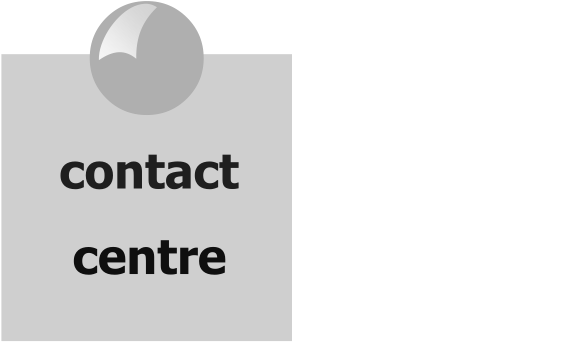The beginning of a New Year is the time when many organisations kick-off their main recruitment process. The CIO jobs market is no different and talking with a number of like-minded clients and consultants alike I have captured some of their key thoughts they have with businesses looking to recruiting a new breed of CIO.
Head hunters are not only supporting the search and selection process but also typically asked to help develop the job profile and in particular to specify the type of skills, experience and personal qualities the organisation should be looking for when evaluating potential candidates. This involves understanding the organisation’s vision, strategy and culture, existing IT capability and challenges, and the role that technology can play in the future.
“It is also important to learn about the client’s previous experience of CIOs – particularly relevant when the client is looking to replace someone – as these can often heavily influence how they will define the role and the criteria they will apply during the evaluation process.” Stated Craig Ashmole, Founding Partner of London based IT Consulting CCServe Ltd. “Whilst every organisation is different what they need from their CIO will vary, but a recurring theme has emerged during discussions about what clients are looking for: They ultimately want a different type of CIO today.”
Now, taken at face value that may not come as a huge surprise; organisations quite often focus on the things they did not like about a previous executive when searching for their replacement. But when asked what they mean by different, the responses demonstrate more than just a knee-jerk reaction to a prior CIO experience. These organisations understand that technology is fundamental to their future and that a new approach to how they engage with and manage IT is needed as a result. To realise this change they need a CIO with different qualities to those that they may have looked for in the past.
Here are five examples of the type of things we are hearing organisations want different for their new CIOs:-
- We don’t want someone who is overly technical – of course organisations want their CIO to understand technology but only to a point. They do not expect their CIO to be the techie who knows how everything works in detail. Specialists and partners can provide this level of detail. The CIO needs to know who to bring together and how to manage them. Technology is being used across the organisation to support the back-office and customer-facing functions. It is not possible for any one individual – and particularly the CIO to understand every aspect of every solution. And, if the CIO is spending their time in the detail, they cannot by definition be operating at the strategic level, which is where their peers are spending their time and where their organisation needs them to be.
- They need to be able to demystify IT – in many companies CIOs have a reputation for making technology even more complicated and inaccessible than it actually is. The underlying technologies are complicated but consumerisation has created a more user-friendly and accessible face of technology. The perception and expectation of the rest of the business has changed as a result and the CIO needs to shift with the times. When vendors talk to the rest of the business they make the effort to simplify things. The CIO has to match this approach or they risk being cut out of the loop altogether. The complex side of IT still needs to be managed but the CIO has to find a way of keeping this complexity away from the rest of the business in the same way that vendors do.
- We want someone who is not going to block or delay things – the CEO can download and start using a new app on their smartphone in seconds yet when they talk to the CIO about a new solution they are often given timescales of months to get anything up and running. Using a smartphone app as a benchmark for a corporate solution may not be reasonable but it is quickly becoming the reference point against which the rest of the business is measuring its IT function. And some vendors are selling services that at least appear to provide this speed of response. CIOs need to think about what how they can deliver a prototype or a subset of the requirements in weeks or even days. Minimum viable solutions, agile development, frequent updates and a fail fast approach have to become the norm for IT in the digital age. And then there is the issue of security; it seems that some CIOs really do play the security card to stop things from happening. CIOs need to balance value against risk and explain this to the relevant line of business executives as part of a joint decision about whether to implement something new. Just saying no is not an option for CIOs anymore.
- They need to be open to new ideas – and not just open to them, CIOs need to be actively searching for and introducing new ideas, technologies and solutions. It does not matter where the ideas for using technology come from, organisations need their CIOs to embrace and facilitate access to the right vendors to make them happen. I am regularly told about CIOs that will not consider alternative vendors, systems or approaches. This is particularly true where there is a history of in-house development and the CIO continues to favour building solutions even though they can be sourced from outside the business without any loss of competitive advantage or agility. CIOs who do not embrace new ideas will very quickly find themselves bypassed by other functions as they deal directly with the vendors that can provide what they need.
- They must be able to build and use relationships with their peers to get things done – this is probably the number one requirement and it is also something I have written about frequently over the last couple of years. Being a CIO in the digital age is about influencing and collaborating with the rest of the business. Other business functions are becoming more involved in technology and they are spending an increasing proportion of their budgets on IT. The CIO no longer has the ultimate say over what technology gets used in their organisations but they will still be held responsible for making sure it all works. They will need good working relationships with their key stakeholders to ensure they can still set the overall direction of the organisation’s investment in IT.
There is no doubt that the CIO role is changing. It has to; technology and the role it plays in business has changed significantly over the last 5-10 years especially as we go into the 20Twenties and beyond. The role of the organisation’s technology leader has to change to keep in line with this shift. Boards realise this. They are beginning to ask for a different type of CIO, one that can play a leading role in the digital age. And that needs different skills, experience and qualities to those CIOs needed in the past.
“So those that are starting to look for your next CIO role, make sure you can demonstrate a different approach to the role and remember to emphasise the broader skills set and experience that employers are looking for in the digital age;” Craig goes on to say, “being a CIO is now less about being technical per se and more about making things happen, and being a business enabler with the use of technology.”




Recent Comments